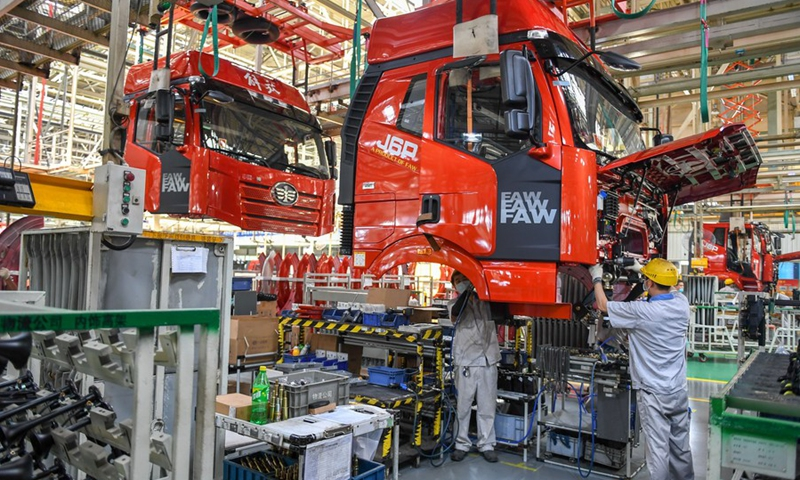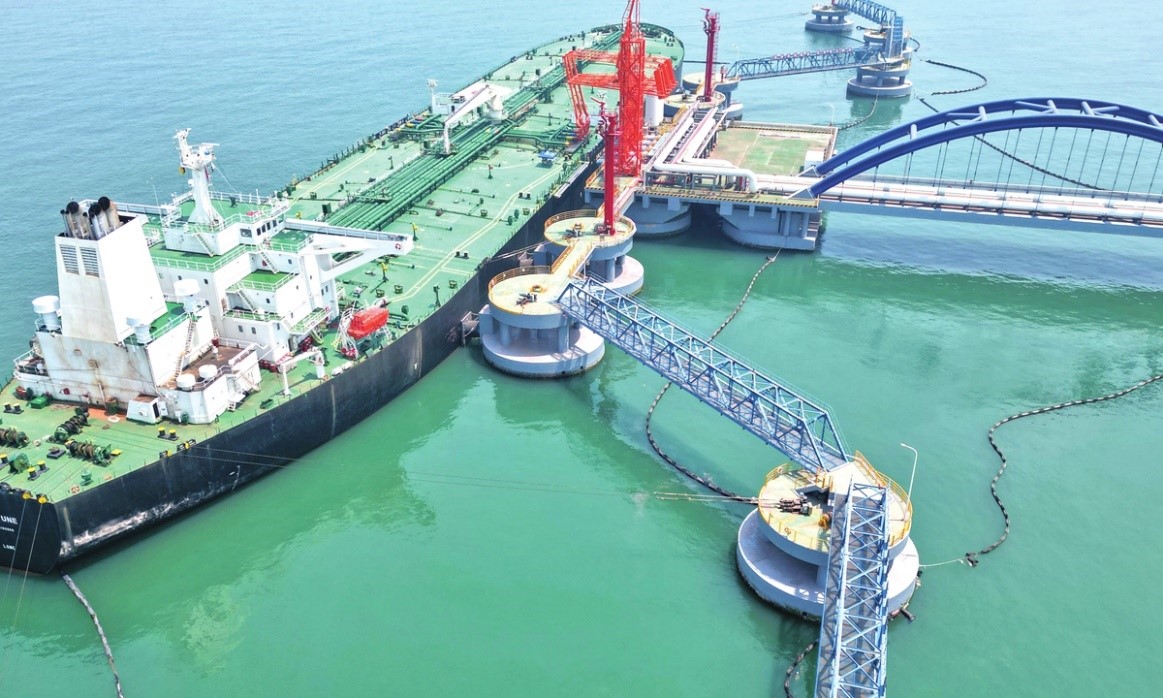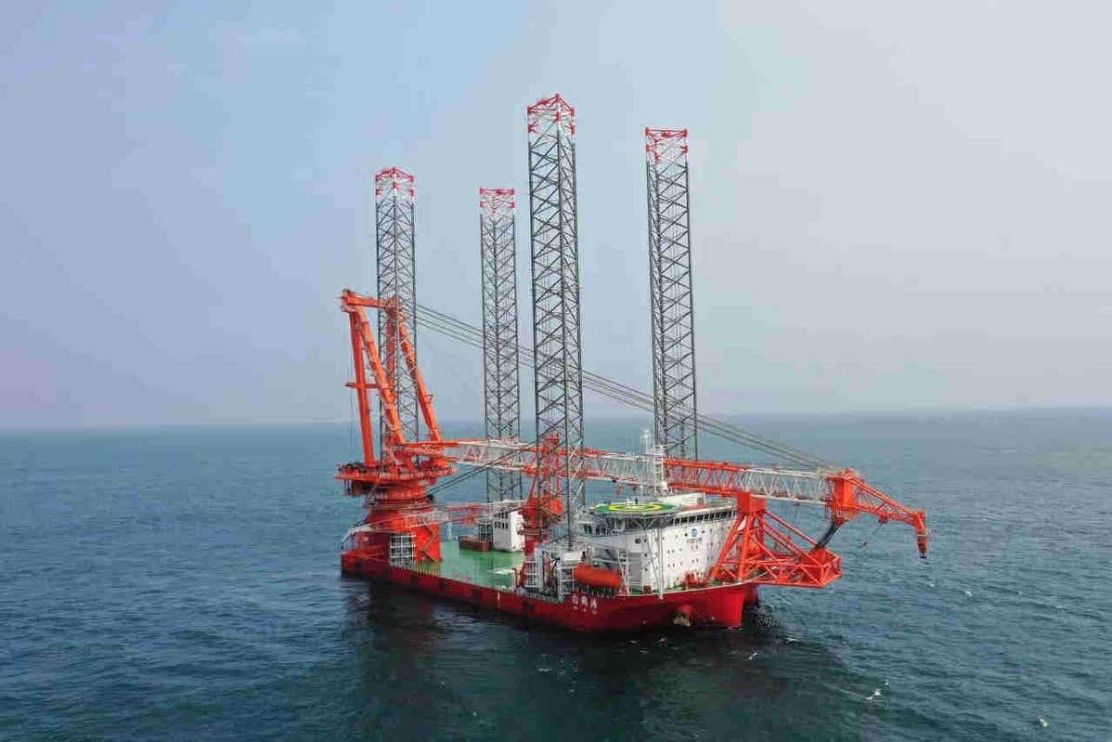1
Chinese welcome National Day with full confidence in nation’s future

With Chinese people preparing to embrace the National Day and enjoy the Golden Week holiday that runs from October 1 to 7, local governments are taking more measures to boost the holiday economy while at the same time fighting against COVID-19. Analysts said that even though some Western media have badmouthed China's economy by smearing the country's COVID-19 prevention measures, the resilience of the Chinese economy and remarkable recovery expectations ahead remain unchanged, with Chinese people having full confidence in the country's prospects.
Tian'anmen Square, the place that witnessed the founding of the People's Republic of China in 1949, has seen more visitors in recent days. On Thursday, two days before the 73rd anniversary of the founding of the PRC, joyful visitors were taking photos of a giant flower basket which had been installed as part of the holiday celebrations. Laughters together with voices speaking in different accents have been heard in every corner of the square.
Liu Bin and Zhang Yan, an elderly couple, were among those who came to visit Tian'anmen Square. They told the Global Times that this year's National Day has special meaning as the 20th National Congress of the Communist Party of China (CPC) will soon take place, and this is why they have come to Beijing.
"We hope our country will always enjoy stability and peace and we seniors can always enjoy doing our square dance happily," said Liu.
"This year has not been easy for many Chinese as the economy may be temporarily affected by sporadic Omicron outbreaks, but with the confidence in the CPC, the government and the country and with the preventive measures of COVID-19, we Chinese will achieve final success since we are going in the right direction," another visitor in Tian'anmen Square told the Global Times.
The cheerful scenes taking place at Tian'anmen Square are only a small part of the national holiday festivities, with many experts anticipating that many consumption-related sectors, including tourism, catering and movies industries will boom despite the impact of COVID-19 onslaught in some areas.
Chinese people have full confidence in China's economic development and despite some current obstacles to tourism, aviation and other industries, they still believe China can overcome all these challenges, Zhang Yiwu, a professor at Peking University, told the Global Times.
It is not strange to see Western media badmouthing China's development, as this is what they have always done, Zhang said, adding that such moves are worthless as the West has fared worse during the pandemic.
Media Source: Global Times
2
China's official manufacturing PMI rises to 50.1 in September, returns to expansion

China's official manufacturing Purchasing Managers' Index (PMI) in September stood at 50.1, the first time it recovered expansion since July, data from the National Bureau of Statistics (NBS) showed on Friday. The reading also beats market expectation, mirroring the resilience of the Chinese economy and its rebounding momentum despite weakened global demand, COVID-19 flare-ups and other factors.
The manufacturing PMI in September also jumped 0.7 percentage point from August, and compared with the reading of 49 in July, NBS data showed. A Reuters poll had placed expected PMI in September at 49.6.
"As a batch of policies to stabilize economy continued to manifest and the impact of heat wave retreats in September, the manufacturing industry warmed up and PMI returned to expansion territory," NBS senior statistician Zhao Qinghe was quoted as saying in a statement on the website of NBS on Friday.
In breakdown, most category indexes show an upward recovering trend. In September, a traditional peak season for production, the production index reached 51.5 percent, up 1.7 percentage points from the reading in August, boding well for accelerated factory activity in production side.
The expectation on production and operation activity index also reached 53.4 percent in September, gaining 1.1 percentage points from last month, reflecting a pick-up in the confidence of manufacturing enterprises.
In demand side, the new order index was 49.8 percent, up 0.6 percentage point from August. But the index was still below the 50-point mark separating growth from contraction as global demands remains slack.
Observers expect the manufacturing industry to maintain a "moderate" increase in the fourth quarter, as more stimulus policies take effect and skyrocketing energy price in Europe fueled certain supply chains being relocated to China.
"China's competitive advantages have not changed, so do its long-term economic fundamentals," Hu Qimu, deputy secretary general of digital-real economies integration forum 50, told the Global Times on Friday, adding that domestic consumption will continue expanding, further buttressing the world's second-largest economy.
As global headwinds and downward pressure mount, Chinese authorities in recent months have released a host of stimulus measures to shore up the economy. At a meeting on Wednesday aiming to further stabilize the economy in the fourth quarter, Chinese Premier Li Keqiang called for concrete measures to ensure the economy operates within a reasonable range in the fourth quarter.
Li said China "should promote the full implementation of policies in the fourth quarter with full effect, maintain recovery momentum, and ensure that the economy's operation is within a reasonable range."
The central bank, the People's Bank of China (PBC), announced on Wednesday that it will set up a special relending facility for equipment renovation and transformation, with a quota of more than 200 billion yuan ($27.64 billion), supporting financial institutions to provide loans for equipment upgrading and renovation.
Media Source: Global Times
3
Chinese refineries ‘cautious’ over lifting export to Europe despite high demand

The need for winter heating in Europe has pushed up market expectations for European countries to increase imports of refined oil product from countries such as China. However, the volatility in global crude oil market will make Chinese refiners cautious toward lifting overseas sales, experts said.
While Europe used to rely on natural gas for heating, higher gas prices and restricted supply of natural gas are forcing them to turn to other energy sources, according to a report released by the CITIC Futures Research Institute.
The International Energy Agency (IEA) estimates that this switch will generate an additional 300,000-500,000 barrels per day (bpd) of refined oil demand this winter.
As the EU has struck a deal to ban most Russian oil imports, Europe has to look for other sources as it increases its imports, experts said, adding that China, with sufficient spare capacity, could be one of the sources.
China has an advantage in exporting refined oil products because it has excess capacity and high refining efficiency compared with other countries, Lin Boqiang, director of the China Center for Energy Economics Research at Xiamen University, told the Global Times on Thursday.
In 2021, China's refineries consumed about 700 million tons of crude oil, up 4.3 percent year-on -year, according to the National Bureau of Statistics. China's consumption of refined oil products was 341.48 million tons, up 3.2 percent year-on-year, meaning that there is sufficient inventory and spare refining capacity.
Since September, China International United Petroleum & Chemical Co and other domestic traders have been actively hauling crude oil, raising the expectation of an increase in China's refined oil export quota, Caixin reported.
Analysts from domestic brokers such as Changjiang Securities and Sealand Securities Co expect China to release another 15 million tons of refined oil product export quota in October, according to Caixin.
China's fuel product exports rebounded in August as China issued more quotas in June and July.
Since the beginning of this year, the Ministry of Commerce has issued export quotas for refined oil products in three batches totaling 22.5 million tons, which is 40 percent lower than the total of 37.61 million tons issued in the tranches batches last year, according to the Ministry of Commerce.
However, since China needs to import crude oil for reprocessing and export, enterprises need to weigh the benefits to the economy of higher exports against operational challenges brought by volatility in crude prices, Lin said.
"At present, oil prices are high and domestic refineries face the risk of falling oil prices after refining," Lin said.
Lin added that a main export market for China's refined oil is Southeast Asia and companies have to closely monitor the profit, operational risks and the transport cost during the long term transport if it is to make shipments to Europe.
Media Source: Global Times
4
Geely acquires 7.6% stake in Aston Martin

China's largest private carmaker Zhejiang Geely Holding Group told China Daily on Friday that it has acquired a 7.6 percent stake in British luxury carmaker Aston Martin Lagonda.
Daniel Donghui Li, CEO of Zhejiang Geely Holding Group, said its well-established track record and technology offerings can contribute to Aston Martin's future success.
"We look forward to exploring potential opportunities to engage and collaborate with Aston Martin as it continues to execute its strategy to achieve long term, sustainable growth and increased profitability," said Li.
Aston Martin Lagonda is a British manufacturer of luxury sports cars and grand tourers. Its predecessor was founded in 1913 by Lionel Martin and Robert Bamford.
Besides its stake in Aston Martin, Zhejiang Geely Holding Group owns Swedish premium brand Volvo and holds stakes in international marques including Daimler, Proton and Lotus.
Media Source: China Daily
5
Platform installs wind power offshore

*An aerial photo shows China's first 2,000-metric-ton offshore wind power installation platform — Baihetan — being deployed on the sea surface.
China's first 2,000-metric-ton offshore wind-power installation platform was delivered for use in the Nansha district of Guangzhou, Guangdong province, on Wednesday, deepening the potential of offshore wind power in the country.
The platform, named Baihetan, is the first offshore wind-power installation platform that meets the fourth-generation standards of offshore wind equipment in China and the requirements of integrated construction operations, including self-lifting and self-navigation in deep waters, according to a statement released by Huangpu Wenchong Shipbuilding, a subsidiary of China State Shipbuilding Corp.
Baihetan was built by Huangpu Wenchong Shipbuilding for State-owned China Three Gorges Corp.
Cai Zhaobin, deputy general manager of China Three Gorges Materials and Tendering Management, said Baihetan is specially designed for high capacity and integrated operation in deep waters.
"Its lifting capacity, depth of operating water and the deck area all come first in the industry," he said.
Baihetan stands on four legs up to 120 meters long — equivalent to a 40-story building.
It can float on the sea surface while slowly inserting its four legs into the seabed, passing through the mud to reach a hard layer.
It then lifts itself above the sea surface to allow the offshore wind-power equipment to be assembled on the platform, greatly reducing the difficulty of installation.
Zhao Denghai, the project's chief builder from Huangpu Wenchong Shipbuilding, said the platform's core equipment is domestically made.
"Through the application of a series of domestic high-tech equipment and technologies, the platform can also achieve stability and safety of operations in complex operating environments, including strong wind and high waves, greatly improving the safety, economy and convenience of offshore construction in deep waters," said Zhao.
Baihetan is 126 meters long and 50 meters wide, and is designed to operate in depths of 70 meters. The lifting capacity of the main crane is 2,000 tons, while the auxiliary crane can lift 200 tons.
With its 4,200-square-meter deck, the platform has a maximum load of 6,500 tons.
It is leading-edge equipment for the development of wind operations in deep waters, the statement said.
Baihetan uses a full electric drive and a full propeller propulsion mode that can achieve low-carbon operation, it said.
Baihetan will mainly be used in the waters of Fujian and Guangdong provinces in the coming months, it said.
Media Source: China Daily